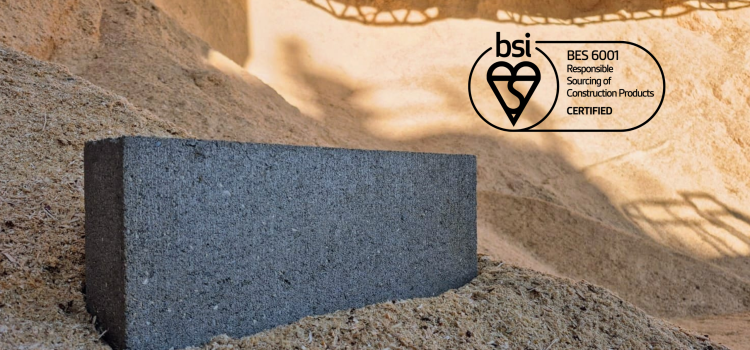Articles
The effect of fire on concrete

Posted by Lignacite
Join us as we explore what happens to concrete when exposed to fire, including the effects of high temperatures on concrete, the potential for cracking and how concrete’s unique properties make it an effective form of fire protection. Read on to discover how concrete holds up under fire and why it’s such a reliable choice for fire-safe buildings.
Can fire damage concrete?
No, fire cannot damage concrete unless the conditions are extreme for a prolonged period of time.
That’s because concrete is one of the most fire-resistant building materials available on the market. The cement and aggregates that make up concrete are inert, non-toxic and have low thermal conductivity. This means that concrete cannot catch fire or make a fire worse.
In addition, it will not release toxins as gas or liquid when heated and it does not transfer heat, except in very extreme conditions.
Research cited by The Concrete Society has shown that when 160mm thick concrete beams were exposed to fire on three sides for one hour, the concrete surface reached 900°C, but at 16mm depth, the temperature dropped to 600°C, and at 42mm it was down to 300°C. Heat can penetrate concrete but not enough to transfer it to other spaces.
Concrete blocks have similar fire-resistant properties to other concrete elements. The fire resistance of loadbearing blockwork is based on meeting criteria for integrity, thermal insulation and mechanical resistance. Non-loadbearing walls meet the requirements for integrity and thermal insulation. A standard 100mm-thick block wall will provide 2-hour fire separation between apartments, or wherever fire separation is required. Much higher periods of fire resistance can be achieved. For example, 215mm blockwork can provide in excess of 4 hours, surpassing the requirements of Building Regulations for all building types.
What happens to concrete when exposed to fire?
The most common effect of fire on concrete is smoke damage, which may cause the concrete to appear black or brown.
In prolonged extreme fire conditions, the chemical and mechanical composition of concrete may be affected. At temperatures above 300°C, the heat starts to make the moisture within the concrete evaporate and turn into steam. Initially, this is likely to occur near to the surface where it’s hottest, causing the outer layers to become brittle and split off in a process known as spalling. Both of these factors are particularly relevant to concrete that is reinforced. The failure of the reinforcement is likely to occur before the concrete.
If buildings suffer fire damage, an inspection may be required before fire damage restoration can begin.
It’s important to highlight that the precise temperatures at which concrete is negatively affected by fire varies depending on the concrete itself, the aggregates used by the manufacturer and the loads on the wall. It will only start to see negative effects with prolonged elevated temperatures, which The Concrete Society highlights is unlikely in house fires. Concrete blocks have been found to withstand temperatures of up to 1000°C, which far exceeds the temperatures reached by house fires.
Using concrete blocks for fire protection
Concrete blockwork is a great choice for fire protection in residential, commercial and industrial projects. Not only is it relatively low cost, but is also virtually maintenance-free and does not need additional treatment to be fire resistant. However, The Concrete Society’s data shows that single-leaf masonry walls may benefit from increased fire resistance when finished with certain types of plaster or fire-resistant plasterboard, giving occupants even more time to evacuate buildings.
Concrete blockwork limits the risk of internal fire spread within a structure. Significant testing has been conducted on Lignacite blocks, which contain recycled wood particles as an aggregate, and it has been found that they are just as successful at fire resistance as other concrete blocks.
As such, they can be used to construct internal and external walls. For example, walls built with 100mm solid Lignacite blocks in loadbearing or non-loadbearing walls will achieve at least 120 minutes fire resistance. This meets the requirements of current Building Regulations, giving any occupants sufficient time to evacuate the building.
Concrete blocks are also easy to repair following a fire, often needing only surface patching or cleaning after a structural inspection. Their robust fire resistance means they are unlikely to undergo severe structural damage, minimising the need for full-scale demolition.
Want to know more about the fire resistance of Lignacite products?
Take a look at our product pages to learn more about the qualities of our block ranges, or discuss your needs with a member of our team today.






















